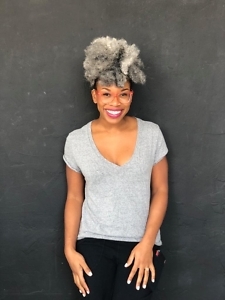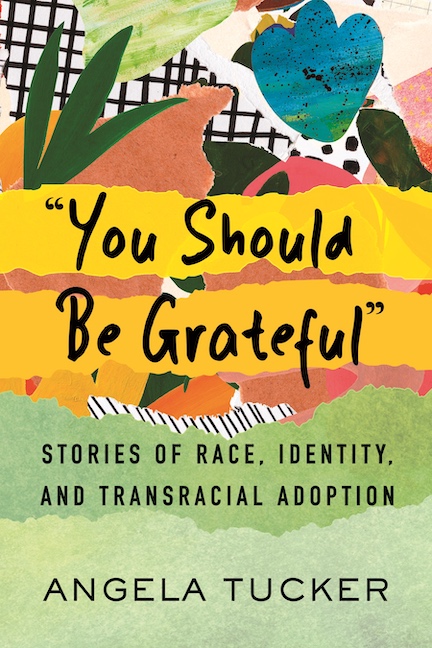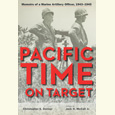Rhythm and Pop
Lynne Berry talks with Chapter 16 about her newest picture book, Pig and Pug
Take one pig, nestled in the pocket of a man’s shirt. Take one pug, making his home inside a woman’s red purse. When the two meet, sparks fly—but so does great confusion and a little bit of frustration. In her newest picture book, illustrated by British artist Gemma Correll, Lynne Berry uses alliteration and lots of rhythmic wordplay to capture the ups and downs of friendship between two creatures who may not be as different as they initially think.
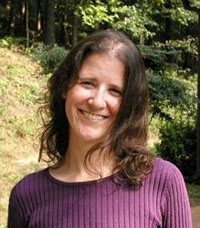 Berry, who lives on a farm just north of Nashville, has been writing picture books for approximately ten years, but Pig and Pug is her first collaboration with Correll, not to mention the first picture book inspired by her own pet pig. She recently answered questions from Chapter 16 via email:
Berry, who lives on a farm just north of Nashville, has been writing picture books for approximately ten years, but Pig and Pug is her first collaboration with Correll, not to mention the first picture book inspired by her own pet pig. She recently answered questions from Chapter 16 via email:
Chapter 16: How did the story of a pig and a pug come to you?
Lynne Berry: About three years ago, my husband and I added to our menagerie a pot-bellied pig. A dear friend of mine was quite taken with Sir Francis Bacon (a.k.a. Francey-Pants) and considered she might like to have a pig, too. “But,” she said, “my family tells me I do not need a pig. Because then I would have a pig and a pug!” What she meant, of course, was that she already had a dog to care for, and the addition of a pig might be a bit much. (Side note: pet pigs do, indeed, require a lot of time and attention, and a pocket piglet—like Pig in the book—will soon grow to a hundred pounds or more. A responsibility not to be taken lightly!)
But the moment she said, “a pig and a pug,” I said, “That’s a book!” I knew I would have to find a story for these characters, because the words were just too delicious: a pig and a pug, a pug and a pig, a pig and a pug and a pug and a pig. I could not stop rolling this phrase around on my tongue with delight. That’s why, in the book, I make liberal use of the speech tags, “says Pig to Pug,” “says Pug to Pig.” Well, of course, they are talking to each other; they are, for all intents and purposes, the only characters in the book. But “pig to pug” and “pug to pig” are such joy to my ears—the rhythm and the pop of the “p” and “g” sounds.
Chapter 16: While you were writing, did you think of this book as a beginning reader-type story, with the kind with vocabulary well-suited to emerging readers? Or did it just end up that way?
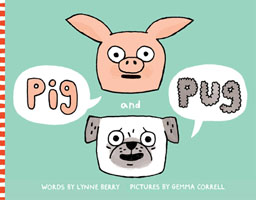 Berry: A little bit of both. I’m not sure I’m disciplined enough to limit vocabulary with intent. Authors who can write just about any story with a limited vocabulary are quite genius, I think—to build anything you might imagine with, say, a single wrench and a flat-head screwdriver. I do not always have the finesse to hammer with a wrench yet leave the reader none the wiser; the wrench marks tend to show. But with Pig and Pug, a simple vocabulary was exactly the right toolset for the job. So I was conscious of working in that direction but can’t really take credit for setting out to write a book for emerging readers.
Berry: A little bit of both. I’m not sure I’m disciplined enough to limit vocabulary with intent. Authors who can write just about any story with a limited vocabulary are quite genius, I think—to build anything you might imagine with, say, a single wrench and a flat-head screwdriver. I do not always have the finesse to hammer with a wrench yet leave the reader none the wiser; the wrench marks tend to show. But with Pig and Pug, a simple vocabulary was exactly the right toolset for the job. So I was conscious of working in that direction but can’t really take credit for setting out to write a book for emerging readers.
Chapter 16: What was it like to see Gemma Correll’s illustrations for your story? Did you get to see sketches early on in the process?
Berry: When I first learned from my editor that Gemma would be doing the art for Pig and Pug, I ran to Google to learn what lay in store for the visual manifestation of these little critters. (I should have known Gemma’s work already. I’m afraid I don’t always keep up with such things as I should. My father refers to me as his hermit daughter, which is not altogether far from the truth.) I pored over Gemma’s website and could not have been more delighted. I knew her art for Pig and Pug would be fantastic.
I did get a peek at early sketches and layouts along the way, and each piece of art was a thrill to see. Emotions run high for Pig and Pug—as they do for all juvenile critters, of course—and Gemma captured this emotion and expression and the personalities of these little guys just flawlessly. The final book is simply beautiful!
Chapter 16: I hear we’re in for a treat at the Parnassus book launch, given that Gemma will fly in for the event. Will this be the first time you’ve met? Any other surprises lined up for the book launch?
Berry: Oh, yes! The book launch should be great fun—certainly for me—as, indeed, I’ve not yet met Gemma. So wonderful of her to travel to Nashville all the way from the UK! I expect she will be nothing short of delightful; her wit and humor are so evident in all of her work. I cannot wait to meet her in person.
In addition, we have recently learned that Doug the Pug, Nashville’s very own celebrity pug, will attend the event and is even willing to pawtograph books. Also representing for Team Pug will be the Empress Evelyn P. Bluebell (a.k.a. Pookie), the self-same pup who, along with Sir Francis Bacon, inspired the writing of Pig and Pug. So, any number of pugs in the house! I’d like to hint that we may have a last-minute appearance from the pig himself, but I’d be guilty of some rather blatant misrepresentation. Francey is not so fond of crowds and will have to stay home.
That said, if I may gush and brag for a moment about the remarkable Sir Francis Bacon, I would love to direct readers to the following link—click here—for a glimpse of the pig who is Pig, albeit no longer a pocket piglet but still occupying a pig-shaped pocket in my heart. (I warned you I would gush!)
Chapter 16: You grew up in Massachusetts, yes? What brought you to Nashville? What made you want to stay?
Berry: Yes, I grew up in a small suburb outside of Boston. But my family has deep roots in the South, and much of my extended family still lives in the Nashville area. So, when I was looking at graduate schools, I considered Vanderbilt. Their program in the biological sciences seemed a good fit for me, and that’s how I landed here.
I’ve stayed for lots of reasons: family, friends, job, and the like. Full disclosure: I do not currently live in Nashville-proper. A couple years ago, my husband and I moved to a small farm in Robertson County, as our animal population had reached a point of absurdity for a one-acre lot in suburban Nashville: dogs, goats, chickens—and, of course, Sir Francis. We needed a bit more scope, so we moved the crew to a ten-acre farm in the tiny town of Cedar Hill, about an hour outside of Nashville. At this point, “staying” in Nashville (or thereabouts) has taken on whole new levels of meaning, as the animals pretty much preclude leaving the farm for any real length of time: goats need milking, and eggs need collecting, and stalls need mucking, and critters need breakfast and dinner and the occasional snack, and hooves and tusks need trimming. What with one thing and another, here we are—and here we stay!
Chapter 16: In 2013 you wrote a picture book about science, What Floats in a Moat?. Any plans for other science titles?
Berry: Yes, I’d like to. Kids cannot help but ask, Why? At the age of about three or four, they will why you to death, if you are not extraordinarily skilled at extricating yourself from the escalating-inquisition game. (“Why is grass green?” Because it has chlorophyll. “Why does it have chlorophyll?” So it can make sugar. “Why does it make sugar?” etc., etc., and so forth.) So I think it’s great for kids to develop a sense early on that science is not something remote or scary. It’s just the oh-so-natural process of asking why—and then going about figuring out the answer through experimentation and observation.
A word of caution, though: What Floats in a Moat? was one of those epic projects: seven years from concept to publication. So be on the lookout for another science book from me in about 2020!
Chapter 16: What’s next for you?
Berry: I confess: I am having a hard time moving on from Pig and Pug. These little characters just tickle me, and I’ve spent some time imagining what further adventures may lie in store for the two. Some pieces would need to fall into place for further adventures to ensue—so I’m keeping my fingers crossed that the fickle winds of fate will continue to blow favor our way!

Julie Danielson, a former school librarian, blogs at Seven Impossible Things Before Breakfast and writes about picture books for Kirkus Reviews and BookPage. Her first book, Wild Things! Acts of Mischief in Children’s Literature, was released last year.


